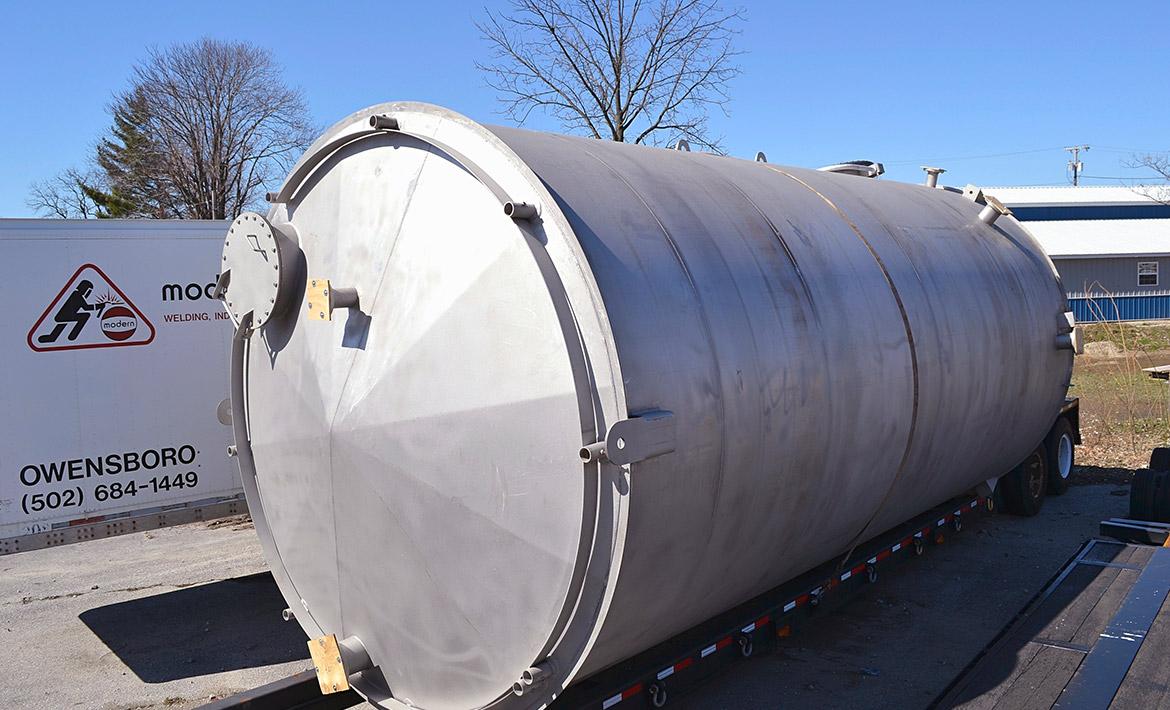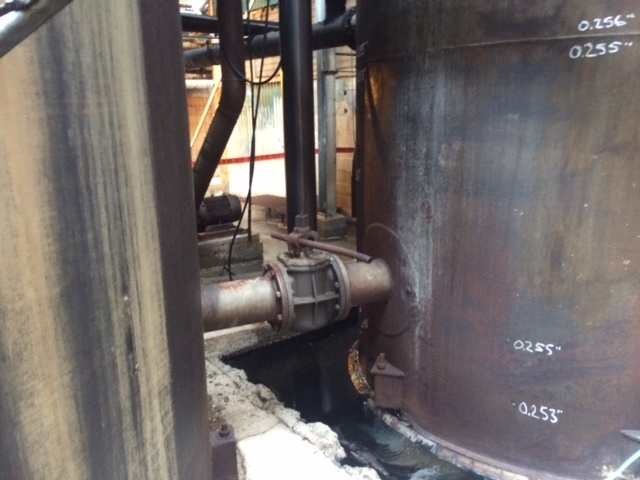Comprehending the Importance of Welding Evaluation in Quality Control Processes
Welding assessment is a vital element of high quality assurance in building and production. It guarantees that welds abide by well-known criteria, which is essential for architectural stability. Numerous assessment strategies, from visual to ultrasonic testing, help determine defects early. This proactive method not only prevents expensive repair services but also enhances safety and security. Recognizing the subtleties of welding assessment can expose its wider effects for sector compliance and track record. API 650 Welding Inspection. What exists under the surface of these techniques?
The Function of Welding Assessment in Quality Control
While welding is a critical procedure in numerous markets, its quality and honesty pivot significantly on effective evaluation methods. Welding inspection acts as a protect, ensuring that welds fulfill established criteria and specifications. This procedure not just identifies defects but also analyzes the overall handiwork, thereby adding to the safety and durability of bonded frameworks. Inspections are indispensable to top quality guarantee, as they assist maintain and prevent costly failings conformity with industry laws. By using experienced examiners, companies can boost their functional efficiency and copyright their online reputations. Additionally, the understandings gained from evaluations can educate continual improvement, causing much better methods and training for welders. Eventually, welding assessment acts as a critical web link in the high quality guarantee chain, guaranteeing that every joint is qualified and trusted of holding up against the rigors of its designated application. This diligence is vital for the honesty of infrastructure and the safety and security of end individuals.
Kinds of Welding Inspections
Welding evaluations incorporate a series of approaches developed to evaluate the top quality and honesty of welds. These evaluations are essential in guaranteeing conformity with market requirements and requirements. Common sorts of welding assessments include aesthetic inspection, which permits immediate recognition of surface area abnormalities; ultrasonic screening, which makes use of high-frequency acoustic waves to spot internal imperfections; and radiographic testing, employing X-rays or gamma rays to expose weld integrity beneath the surface (API 650 Welding Inspection). In addition, magnetic bit testing is utilized to recognize surface area and near-surface discontinuities in ferromagnetic materials, while dye penetrant testing provides a technique for disclosing surface-breaking defects. Each kind of assessment offers a certain objective, contributing to the general quality control process. By using a combination of these methods, assessors can offer an extensive evaluation of welding high quality, ultimately guaranteeing the safety and reliability of bonded frameworks
Usual Problems Spotted in Welding
A variety of typical issues can occur throughout the welding procedure, influencing the honesty and efficiency of bonded structures. These flaws consist of porosity, which involves caught gas pockets within the weld, damaging its stamina. Fractures might also form because of quick air conditioning or incorrect joint layout, leading to potential failing under anxiety. Insufficient combination takes place when there is inadequate melting of the base metal, resulting in weak bonds. Another flaw, damaging, involves the elimination of base steel along the weld side, creating a considerable architectural weak point. Furthermore, extreme spatter can affect the appearance and demand more cleaning or fixing. Imbalance can lead to unequal weld beads, compromising the overall top quality. Determining these issues early with correct evaluation methods is vital to ensure the dependability and security of bonded components, eventually protecting the efficiency of the whole structure.

Benefits of Normal Welding Assessments
Normal examinations play a considerable function in keeping the high quality and safety and security of welded structures, particularly due to the common problems previously described. These examinations provide a possibility to recognize and rectify problems before they intensify into significant problems, making sure architectural integrity. By identifying problems early, companies can lessen repair service prices and avoid prospective project hold-ups.
Furthermore, normal welding examinations enhance compliance with market standards and laws, promoting trust check it out fund among stakeholders. This adherence not just secures the firm's credibility however additionally adds to improved safety for workers and the general public.
Moreover, consistent evaluations help with much better training and ability advancement for welders, as responses from examinations can lead improvements. Eventually, the benefits of regular welding inspections extend past prompt top quality guarantee, advertising long-lasting operational efficiency and reliability in bonded frameworks.
Finest Practices for Effective Welding Assessment
Implementing ideal techniques in welding assessment is vital for guaranteeing the highest possible requirements of high quality and security. First, assessors need to be effectively trained and certified, having an extensive understanding of welding techniques and products. Using innovative assessment technologies, such as ultrasonic screening and radiography, enhances the discovery of defects that may not be visible to the naked eye. Developing a clear inspection strategy, detailing the standards and regularity of evaluations, warranties consistency and thoroughness.

Documenting all searchings for diligently is essential for traceability and liability. Routine calibration of examination equipment assures accuracy, while keeping a organized and tidy work area decreases the threat of contamination. Furthermore, fostering open communication among staff member facilitates the sharing of insights and promotes a culture of high quality. By sticking to these ideal techniques, organizations can notably improve their welding quality control procedures, eventually bring about more secure and more reputable items.

Frequently Asked Concerns
What Certifications Are Needed for a Welding Inspector?
A welding inspector usually requires accreditation from recognized organizations, such as the American Welding Culture (AWS) or the International Institute of Welding (IIW), along with pertinent experience and knowledge in welding processes and quality criteria.
Exactly How Typically Should Welding Inspections Be Carried Out?
Welding evaluations should be executed on a regular basis, generally at various job stages, consisting of before, throughout, and after welding processes - API 650 Welding Inspection. The regularity typically depends upon task specs, governing demands, and the intricacy of the welds involved
What Are the Prices Associated With Welding Examinations?
The costs related to welding inspections differ widely, normally varying from a few hundred to a number of thousand bucks, depending on aspects like inspection type, task size, and place, influencing overall job spending plans and timelines.
Can Welding Inspections Be Conducted From Another Location?
Yes, welding examinations can be conducted remotely making use of innovative technologies such as drones, cams, and ultrasonic screening. These methods enable assessors official statement to assess weld integrity without click now being physically present, improving effectiveness and security in numerous settings.
How Do Evaluation Results Effect Job Timelines?
Examination results can greatly impact project timelines by recognizing problems early, resulting in necessary rework or modifications. Delays may happen if examinations reveal problems needing resolution, inevitably influencing total task conclusion and budget plan adherence.
Welding assessments include a variety of techniques created to examine the high quality and stability of welds. Common types of welding inspections consist of aesthetic examination, which enables for instant identification of surface irregularities; ultrasonic screening, which makes use of high-frequency sound waves to discover interior defects; and radiographic testing, using X-rays or gamma rays to expose weld integrity beneath the surface area. Regular assessments assist in much better training and skill growth for welders, as responses from evaluations can direct renovations. Applying finest practices in welding examination is necessary for ensuring the highest possible criteria of quality and safety and security. Welding assessments ought to be executed consistently, normally at different project phases, including prior to, throughout, and after welding processes.